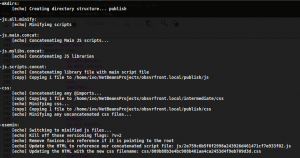Alright, there is a bundle for H5BP for symfony2 and there is Assetic, you can probably use both with Silex and thats just fine.
But in case you want to keep your Silex project lean (since its micro) you can use Twig and H5BP only and build / deploy your app from the outside.

With a little tuning of the H5BP build, of course / unfortunatly. (Ok thats the caveat)
So i have a structure like so:
web/
(this is the webroot, here is js/css/images, all that asset stuff and the index, here we use the recommended H5BP stuff’n’structure)
views/
(this is outside of webroot and here are all of the *.twig)
Continue reading “Silex, Twig und HTML5 BoilerPlate”